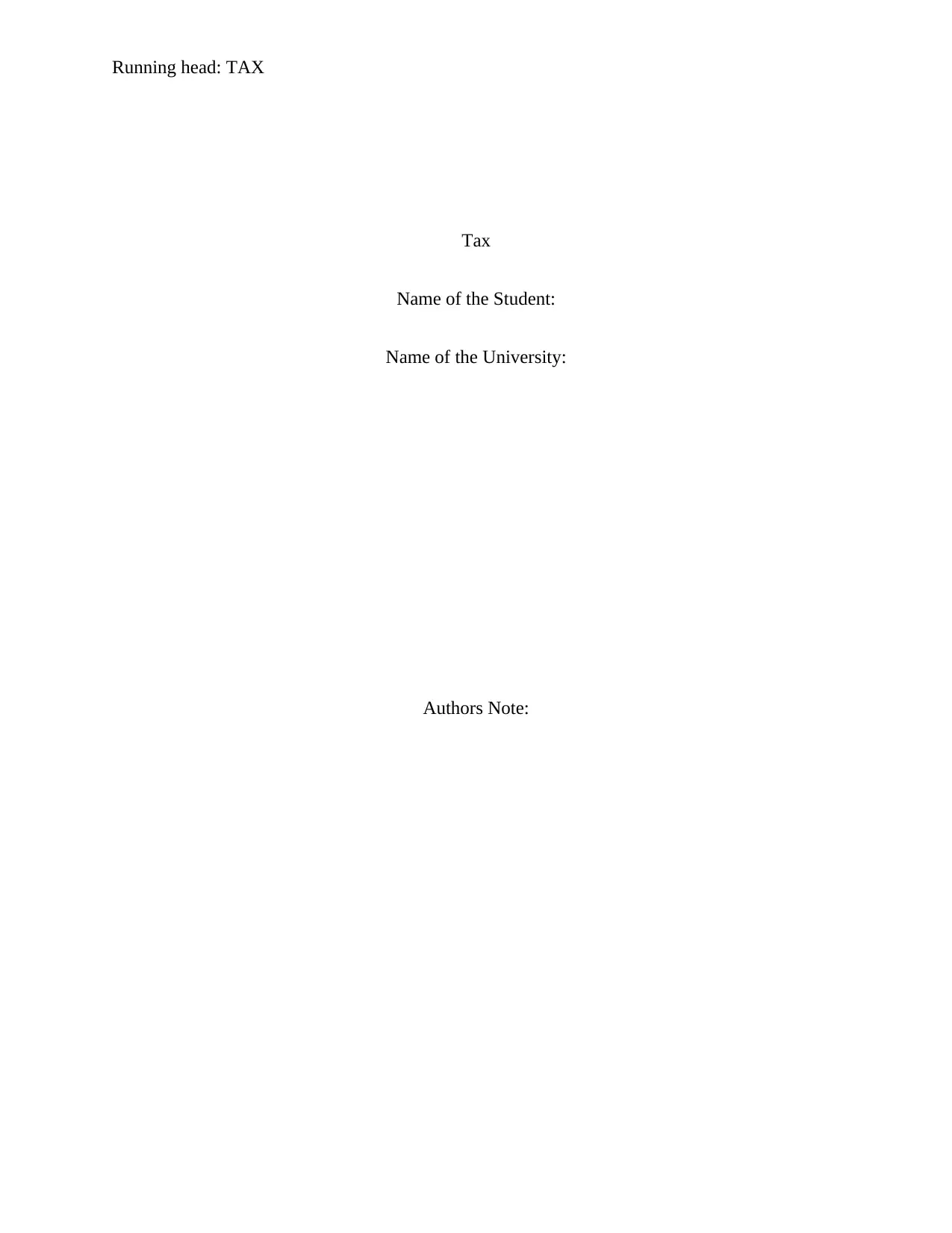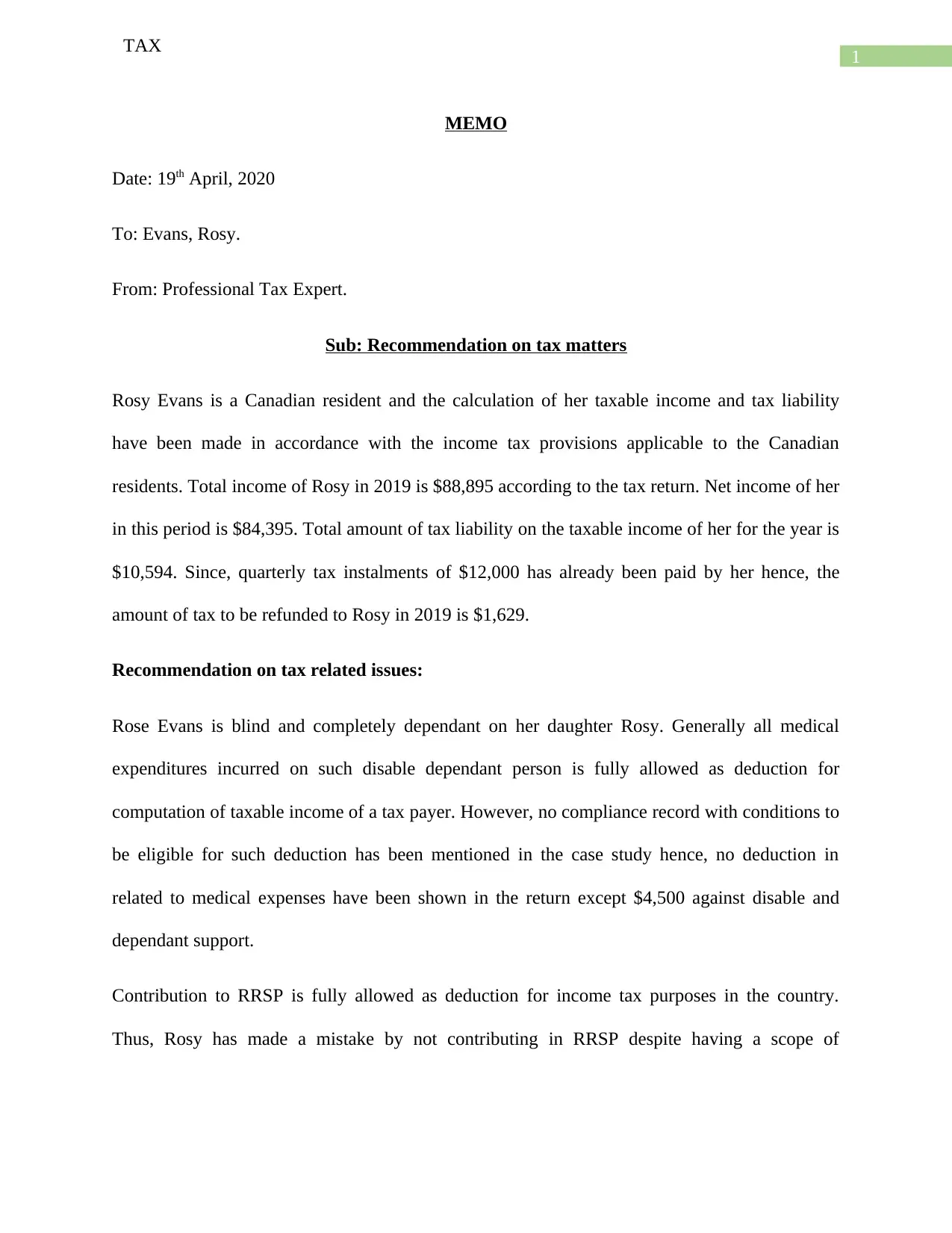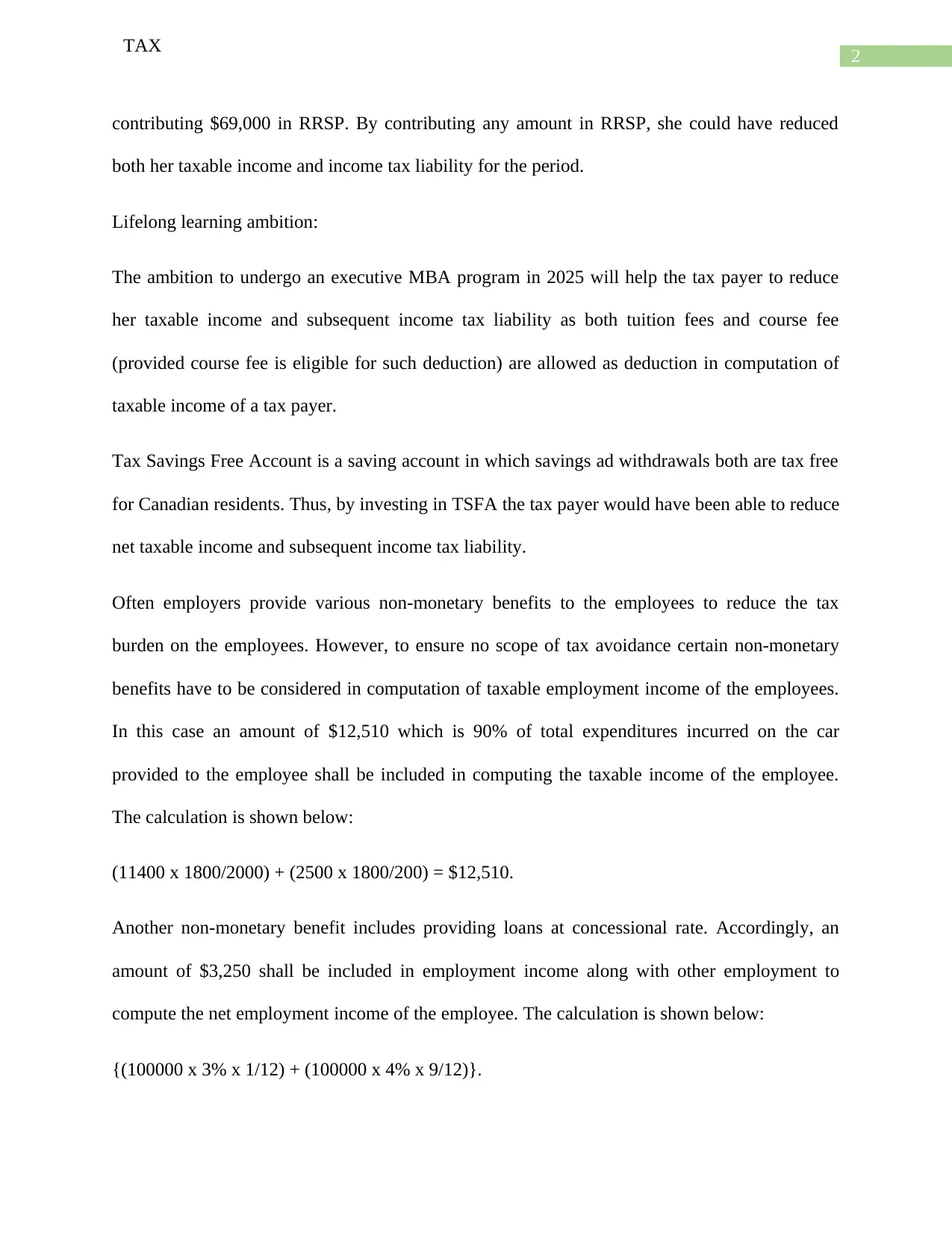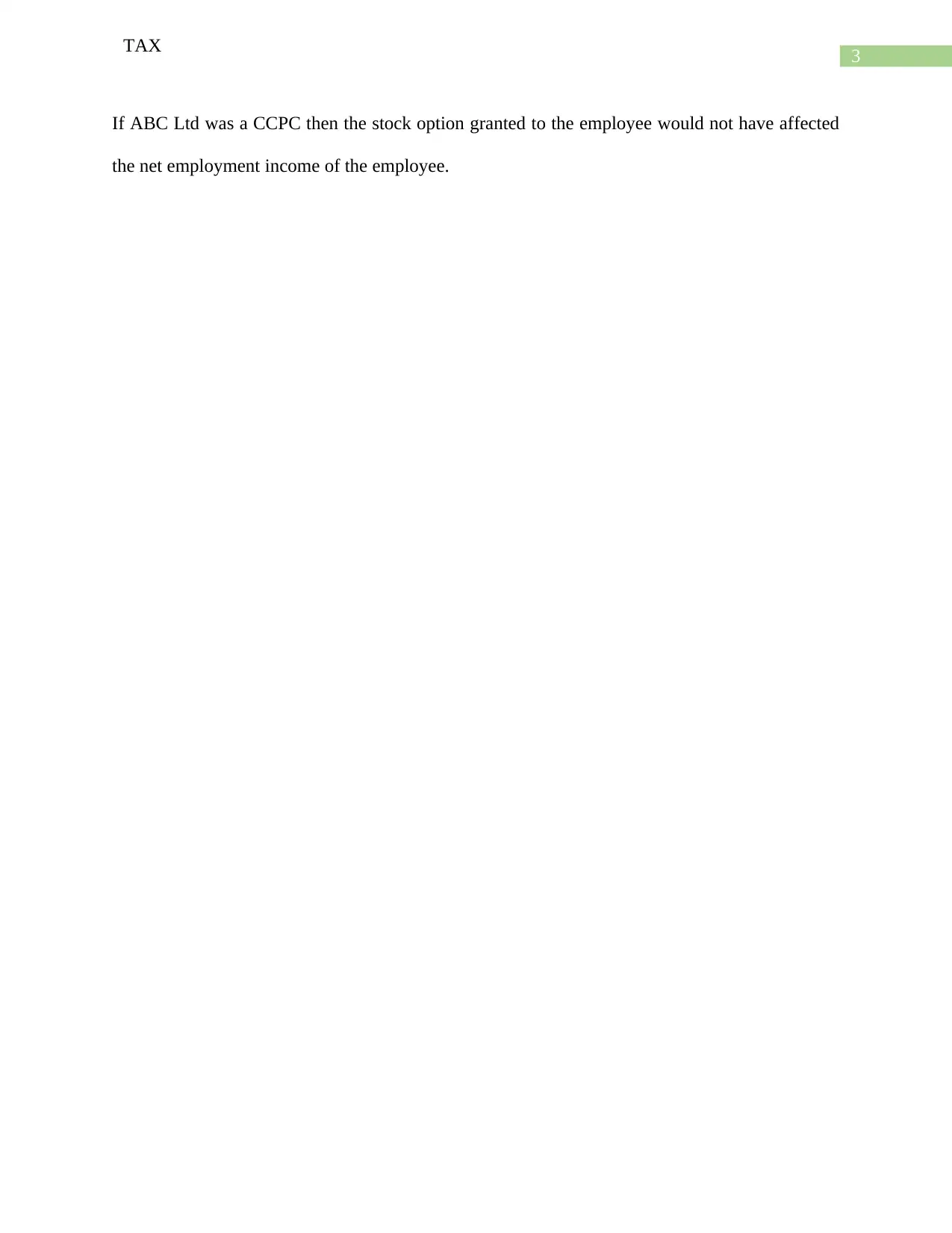FIN 3020 Project: Rosy Evans' Canadian Tax Liability Analysis
VerifiedAdded on 2022/07/28
|4
|597
|41
Project
AI Summary
This project analyzes the tax situation of Rosy Evans, a Canadian resident, based on the provided financial information. It calculates her total income, net income, and tax liability for 2019, including a determination of her tax refund. The project details recommendations on tax-related issues, such as deductions for medical expenses, RRSP contributions, and the impact of her lifelong learning ambition (MBA program). It also addresses non-monetary benefits provided by employers, like car usage and concessional loans, and their impact on taxable income. The project considers rental income from a six-plex property, detailing income, expenses, and relevant tax implications. The analysis includes calculations for taxable income, tax payable, and potential tax savings opportunities. This project provides a comprehensive overview of Rosy Evans' financial situation and suggests tax planning strategies.
1 out of 4











![[object Object]](/_next/static/media/star-bottom.7253800d.svg)